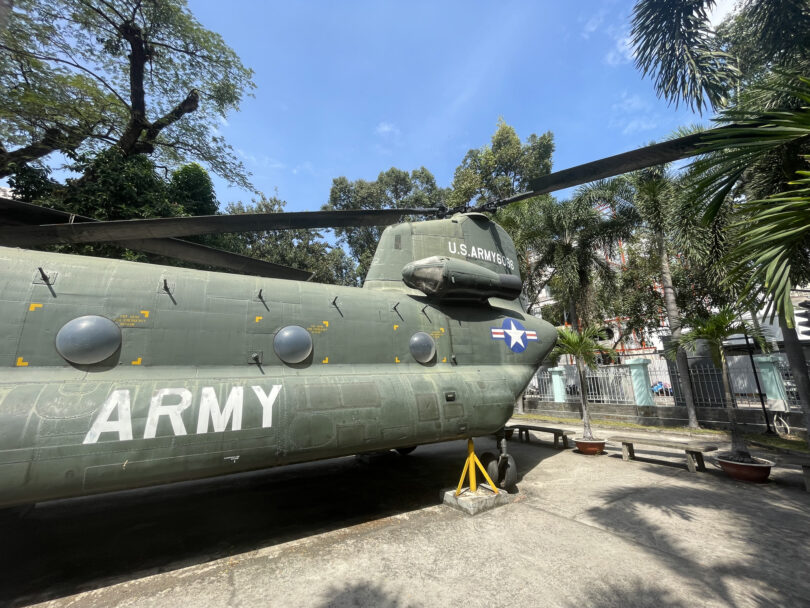Ho Chi Minh City Marks 50th Anniversary that ended a War and Shook the United States
Sydney, Australia
*Compiled and fact checked by A.Ritenis /Edited with assistance of Gemini AI
30 April,2025
Today marks the 50th anniversary of a pivotal moment in 20th-century history: the fall of Saigon, now Ho Chi Minh City, on April 30, 1975. This event signaled the end of the Vietnam War, a conflict that spanned two decades, claimed millions of lives, and left an indelible mark on global politics and the collective consciousness, particularly in the United States.
Fifty years ago, the world watched as North Vietnamese forces entered Saigon, culminating a swift and decisive offensive that followed the withdrawal of American troops. The iconic images of helicopters evacuating personnel from the roof of the US Embassy became enduring symbols of the United States’ defeat and the chaotic end to its long and costly involvement in Southeast Asia.

For Vietnam, the fall of Saigon represented the reunification of the country under communist rule after years of division and devastating conflict. While marking the dawn of a new era for the Vietnamese people, the victory came at an immense human cost, with estimates of Vietnamese deaths ranging from one to four million, both military and civilian.
– Fifty years ago today, the air in Saigon crackled with the roar of Huey helicopters and the thunder of advancing tanks. April 30, 1975, marked the dramatic and definitive end of the Vietnam War, culminating in the fall of the South Vietnamese capital and the reunification of Vietnam under communist rule. This pivotal moment, now observed as the 50th anniversary, not only redrew the map of Southeast Asia but also delivered a profound and lasting blow to American confidence and its global standing.

For years, the United States had poured vast resources – both human and financial – into supporting the Republic of Vietnam against the communist North, backed by the Soviet Union and China. The conflict became a Cold War flashpoint, igniting fierce debates at home and abroad about the morality and efficacy of American interventionism. Yet, despite the immense effort, the tide began to turn decisively in early 1975.

The swift collapse of key South Vietnamese strongholds in the face of the North Vietnamese Army’s Spring Offensive caught many by surprise. As the northern forces advanced with relentless momentum, panic gripped Saigon. The once-bustling city became a scene of desperate chaos as South Vietnamese officials, military personnel, and civilians frantically sought to escape the impending communist takeover.

Operation Frequent Wind, the hastily organized evacuation of American personnel and at-risk Vietnamese allies, unfolded under a sky thick with the sounds of rotor blades. The iconic images of desperate individuals clinging to the skids of overloaded helicopters ascending from the US Embassy roof became indelible symbols of America’s humiliating retreat. These scenes played out live on television screens across the globe, etching the reality of defeat into the American psyche.
The fall of Saigon, which was subsequently renamed Ho Chi Minh City, signified the end of a protracted and brutal conflict that had claimed the lives of over 58,000 American soldiers and untold millions of Vietnamese civilians and combatants on both sides. The war left Vietnam scarred by unexploded ordnance and environmental damage, while the United States grappled with deep societal divisions, a generation of veterans struggling with the trauma of war, and a loss of faith in government.

“The images from that day are seared into our collective memory,” says Professor Minh Nguyen, a Vietnamese-Australian historian at the University of New South Wales. “For Vietnamese people, it was the end of a long and bloody struggle for unification, but it also ushered in a new era with its own set of challenges and complexities. For those who fled, it marked the beginning of a life in exile, carrying the weight of loss and displacement.”
The legacy of the Vietnam War continues to be debated and re-examined in the United States. It prompted a reassessment of foreign policy doctrines, leading to greater caution in military interventions abroad. The “Vietnam Syndrome,” a reluctance to engage in protracted overseas conflicts, became a significant factor in American political discourse for decades.
Today, as Vietnam marks this significant anniversary, there are commemorations and reflections on the nation’s progress and its place in the world. For the Vietnamese diaspora in Australia and elsewhere, it is a day of remembrance, mourning, and a testament to their resilience in rebuilding their lives in new lands while never forgetting the homeland they left behind.
The 50th anniversary of the fall of Saigon serves as a stark reminder of the profound human cost of war and the enduring consequences of political decisions made on the global stage. It compels us to reflect on the lessons learned, the sacrifices made, and the long and often painful journey towards healing and reconciliation.







